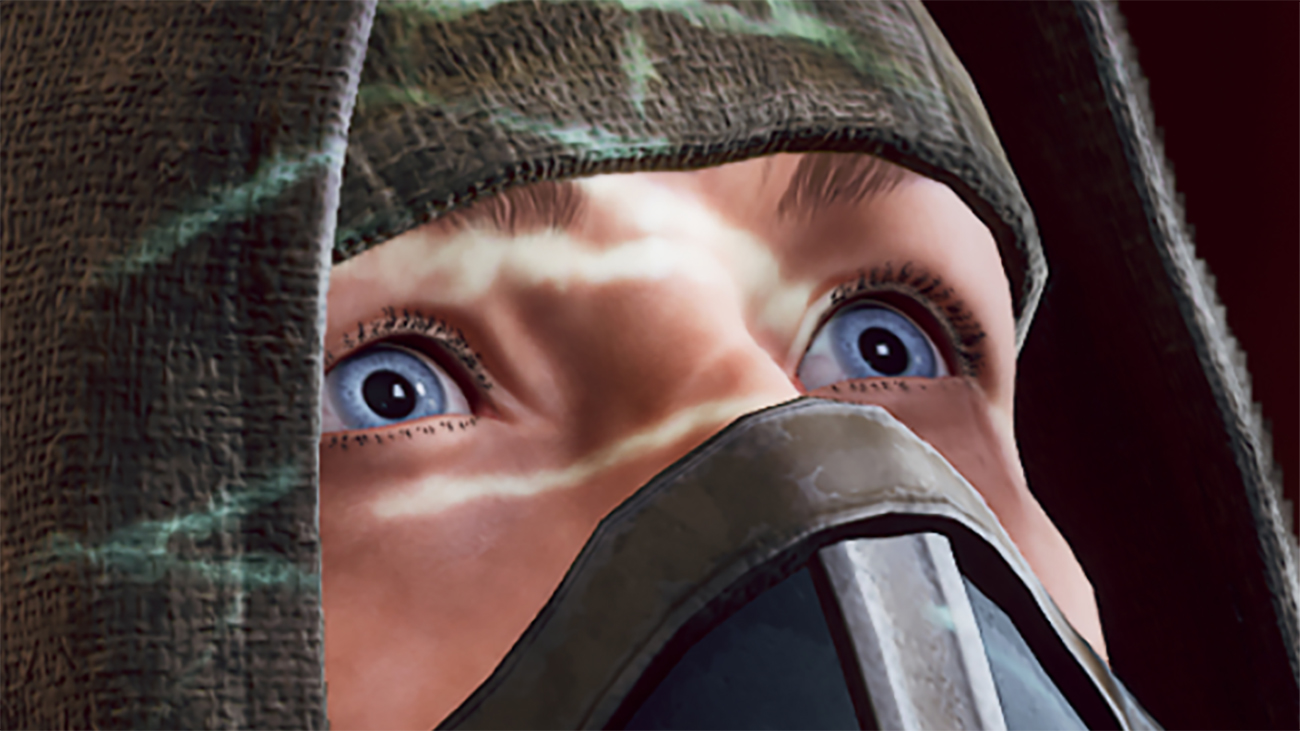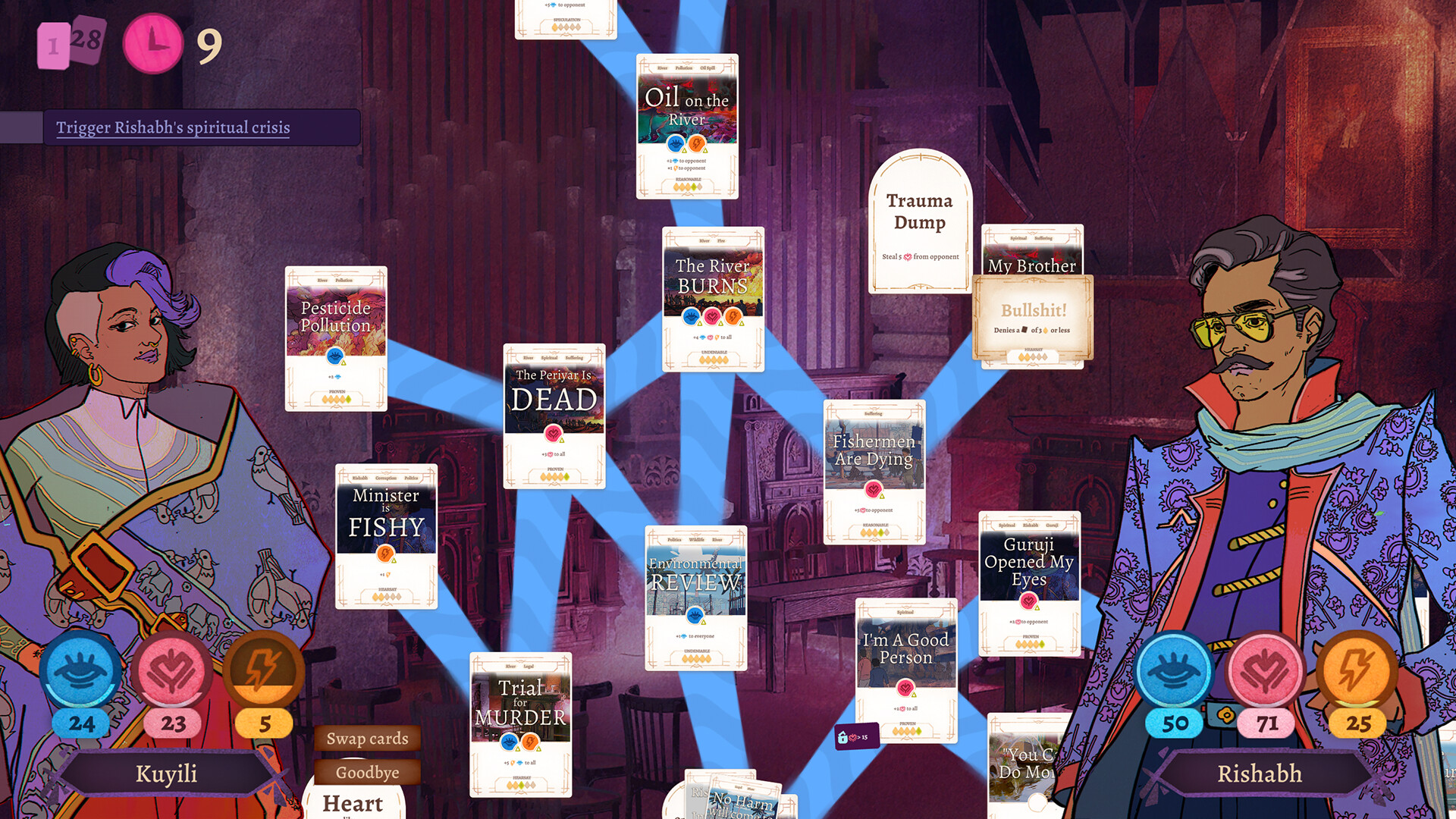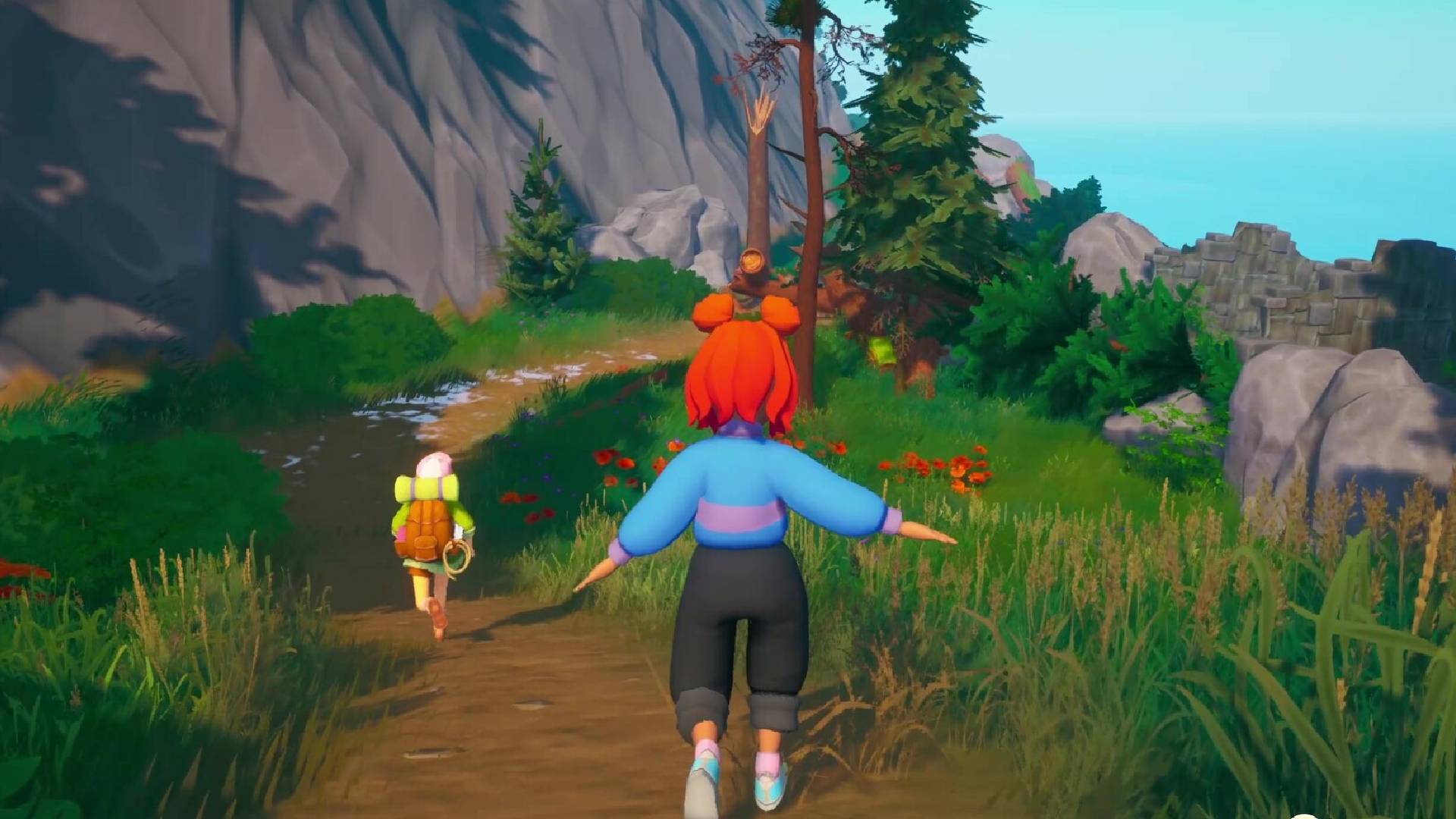
With the whole world dissolving into an apocalyptic, primordial abyss, your band of misfits sets out into a nightmarish land to save everything by destroying corrupted pieces of reality beneath an ancient mountain. They’ll probably fail, taken down by ambush, infighting, bad luck – but maybe, just maybe, fortune favors them and they destroy some unspeakable horror… and then gear up for the next run. That’s the routine in Darkest Dungeon 2, where I was never sure if I’d journey from desperate despair to delicious delight, or from frolicking fun to futile frustration, every time I booted it up. Enjoying it for the dozens of hours it demands to complete takes the spirit of a gambler, someone always willing to hold out hope that the dice will fall the way they want – and that the next run will be better than the last.
Building on the turn-based combat of Darkest Dungeon, Red Hook Studios has made a brave decision: Darkest Dungeon 2 is simply not the same kind of game. Instead of an epic-length, ongoing campaign where your party embarks from a central base and returns with loot to improve it if they survive, here you make shorter stagecoach gauntlet runs towards the looming mountain, getting slightly stronger each time. It’s a tough tradeoff, and though I miss the sense of place that Darkest Dungeon’s town creates, this sequel has less potential for major setbacks from party wipes that feel like pure, sadistic punishment. Win or lose you earn candles, currency that unlocks permanent bonuses and upgrades to your traveling coach, new hero types, stat buffs, and items for the random drops to pull from, so no run is really wasted.
What’s still there from Darkest Dungeon? It’s all very stylishly presented. Creepy characters, unsettling music, and ridiculously gloomy writing combine with the game design to make one of the neatest early-modern fantasy worlds in gaming. (And it’s nice that everything looks cool while you get frustrated by repeated failure. There’ll be a lot of that, by design.) The same famously gritty narrator returns as the only voice you’ll hear aside from grunts and wails, rumbling out some outrageously melodramatic lines so overwritten and overwrought that I can’t help but love them. The self-aware approach to the dark fantasy genre here is so pleasing, with characters from the first game evolving forward in unexpected ways as you learn their stories – and popping up in new or weird places you wouldn’t expect.
The famously gritty narrator returns, rumbling out some outrageously melodramatic lines.
While the graphics are now 3D instead of the 2D paper doll look, they still make use of Darkest Dungeon’s signature heavy-lined graphic style. Working in 3D space gives everything a much stronger screen presence, adding a sense of weight to more of the cast and monsters. It’s certainly controversial to some, but to my eye those improved, smoother animations (like when a mace is dragged back across the floor after a heavy blow) and spatial sense are worth anything lost in translation from sprite to model.
What We Said About Darkest Dungeon
Darkest Dungeon is a grim and merciless tactical strategy game whose great tension comes from its many layers of complexity, unpredictable randomization, and willingness to put our fragile characters in mortal danger if we dare to venture into its depths in search of treasure and glory. Brilliant narration and stiff yet surprisingly expressive animation make it easy to be drawn into its vague but tantalizing world, though the end feels artificially out of reach. – Dan Stapleton, January 10, 2020
Score: 9.1
Read the full Darkest Dungeon review
The combat design is also a step up, with many powers and abilities distilled into a system of handy status tokens to gain and exploit, such as bleed, blight, weakened, dodging, and guarding, among others. These effects matter for both your team and the enemy’s, as the returning system of four ranks for hero and enemy positions dictates how a character fights. Certain skills can only be used from a specific position, and only affect enemies or allies in specific rank slots. Managing a flexible team that can fight any enemy lineup, as well as keep the battlefield clear of cluttered enemy corpses, is a fun and engaging strategic challenge – especially when dealing with abilities that shift characters’ positions around.
Managing a flexible team that can fight any enemy lineup is a fun and engaging strategic challenge.
Heroes that die are dead for the rest of the run, but are replaced with a random new class if your survivors make it to the next inn checkpoint – but the truth is that most mid to late-game runs are doomed by losing even one hero because each one fills such a unique role in a successful team build, and being under strength in a fight is a huge disadvantage.
While it becomes great if you can get over the hump, I think a lot of people are going to bounce right off of Darkest Dungeon 2, or get a negative impression from it, based on the first dozen hours of play. To be fair, its startup screen warns you that it’s about making the best of a bad situation, and that failure is inevitable, but those first runs serve to dramatically highlight its worst parts while obscuring the better, more nuanced things that become possible once options have opened up and you’ve unlocked new toys to play with – part of that roguelite grind trap.
Darkest Dungeon 2 becomes great… if you can get over the hump.
Newcomers might bounce off for any of myriad reasons. You might be frustrated by the lack of tools to overcome what’s ahead of you because you haven’t unlocked them yet. You might get tired of limited enemy variety after fighting similar teams of lurching zombies and bandits, because many monsters and regions don’t unlock until you’ve been dashed against the wall of the first ones for a few hours. Or it’ll be the subsystems of the journey itself, from the coach-driving minigame, which is definitely among the least thematically appropriate examples of a time-wasting minigame I have encountered in the last decade, to the layers of stagecoach durability and its ever-diminishing torchlight granting enemies increasing random bonuses. You personally steer the cart between locations on your map, trying to hit things in the road to get a chance of loot dropping, but taking damage to armor or wheels (which can force you into a disadvantaged battle as you repair them) is predetermined by your chosen path.
There’s decent variety in places to go and what happens as you journey between map nodes – locations on the branching map range from combat encounters and mini-dungeon Lairs with three consecutive fights to any of a number of spots that let you rest, refresh, scout ahead, or get various other bonuses and fight optional encounters. There’s a smart touch in that each character in your party has random objectives that can spice it up by incentivizing routes you might otherwise skip, like to visit a nice spa, or kill a specific boss. Free navigation and optimal choice-making is spoiled, however, by the need to keep down the arbitrary-feeling Loathing meter, or to avoid obstacles like blockades, ambushes, and rough patches.
It’s simply a given that you won’t find meaningful success on some early runs.
Darkest Dungeon 2 takes roughly 60 to 80 hours depending on how lucky and clever you are – it took me 62, and in the end I used the Radiant Flame (which scales the difficulty based on how much you lose) for the last two bosses. Most of that time was spent on attempts at reaching, then figuring out the puzzle to beat, the five end bosses. Make no mistake: if you want to complete a campaign, you’re in for a grind.
Grinding. It’s a common roguelite trap. Too little grind and you don’t feel like you’ve earned your victories; too much and you might regret pushing through a game that clearly doesn’t respect your time. It’s a difficult balance to strike, and in the early hours Darkest Dungeon 2’s grind just doesn’t fall quite right. It’s simply a given that you won’t find meaningful success on some early runs, but it’s frustrating when those losses come from just not grinding enough, sometimes for hours, as you earn currency and spend it on progression hoping that whatever you need will unlock… only to find what you needed by taking a specific hero to a specific shrine while on a quest, or lucking into a perfect run where just the right trinkets drop and the right pair of heroes develops just the right relationships during a stop at an inn.
Those systems are a place where Darkest Dungeon 2’s emphasis on sheer volume of random events ticking up an overwhelming number of different meters undermines the whole thing. Character stress, loathing, relationship scores, item pickups, events, map layout, even the proliferation of items with eye-rollingly minuscule 5-10% chances to activate, all just serve to make so much of a single run feel like one giant roulette wheel you’re just hoping will land on the color and number you’ve put your money on.
What brings Darkest Dungeon 2 back from the brink is that mastering the systems and working with what you can change rather than what you can’t lets you turn roulette into poker: Even when the odds are against you there’s an element of skill if you can muster up some bravado and count a few cards. Yeah, that means you’ll still lose a lot along the way, but you’ll be using those chances to unlock new skills and get vital intelligence on how to beat bosses that can feel more like puzzles than boss fights.
Mastering the systems lets you turn roulette into poker.
Darkest Dungeon 2 lives or dies on whether you’re interested in tweaking, building, re-building, and figuring out new uses for its characters in parties of four, and if you do it contains a bottomless pit to dive into. There are 11 hero classes, with a bonus 12th as an unpredictable mercenary, and each one is undeniably unique compared to the others. Heroes have five skills to start, and can equip five skills at a time, but end up with 11 total choices once you unlock them all by exploring their memories in hero shrines while on a run.
One of the many possible stops along travel paths, shrines are vital to beating the campaign but rarely add to your current run. That’s a weird and frustrating piece of meta-progression that for some reason stands outside the otherwise succinct candle-spending system, but it’s where you find hero paths to further customize their base stats and a number of skills. The Grave Robber, for example, can easily shift from a multi-role attacker to a ranged specialist depending on how you configure her and if you’ve got the right skills available.
After all of that unlocking business is mostly over and done with, building up your team of heroes in a run is where more than half the fun is in Darkest Dungeon 2. You pick your lineup, figure out how their skills synergize, arrange their order from front to back, and exploit the hell out of it until you win or lose. You’ll customize your team even further during a run by equipping trinkets and consumable combat items you find or buy, upgrading their skills using precious earned mastery points, and using special buffing items on them while resting at inns between regions. All of that tweaking and adjusting becomes integral to your strategy because you can control so little about what otherwise happens in a run… including what trinkets and items you get, and not lucking into something to optimize your team will absolutely sink a run or two – you just have to be ready to accept some otherwise-perfect runs ruined by surprise to enjoy the ride.
Building those teams is undeniably fun, as is seeing what happens to them in action. They might grow to love or hate each other as events go on and you choose which one of them gets to respond to places and events – the Man-at-arms might choose to fight a band of monsters head on, while the Jester would rather pay off the beasts and flee without a fight. They gain character traits from events in combat – fear of bleeding from getting cut a lot, or suicidal bravery from succeeding against the odds, for example. Relationship bonuses can stem from both character traits and events, and are randomly assigned (because everything has to be!) at each inn stop based on the characters’ underlying relations. Keeping relations between characters as high as you can is vital to success, because you just can’t succeed when your two DPS characters hate each other and thus debuff each other every time one of them attacks, but you can really shine if (my favorite example) your tank’s protective moves also buff your offensive characters’ damage skills.





